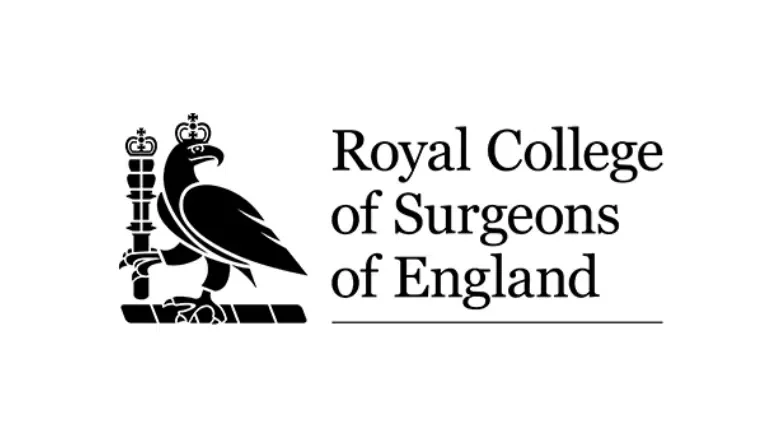Gyno surgery can help to get rid of excess breast tissue, also known as ‘man boobs’. Men can achieve a sculpted and more masculine-looking chest with enhanced pecs. When excessive breast tissue is found in a man’s chest, it can often look like female breasts in severe cases, and this can lead to a significant loss of self-confidence. Centre for Surgery is an expert in gyno surgery in London and treats hundreds of men each year at our renowned UK plastic surgery clinic. Here, we present top tips to get the best recovery after male gyno surgery.
What causes gyno?
Gynecomastia is a common medical condition found in men and refers to excessive enlargement of male breast tissue and, in rare cases, can signify an underlying medical condition. The causes of gynecomastia are primarily due to a hormonal imbalance between androgens and oestrogen. There are certain products which can affect hormonal balance, leading to gynecomastia, including alcohol, cannabis, herbal medicines and certain medications such as antidepressants. Hereditary factors may also play a part in the development of gynecomastia. Gynecomastia can have significant psychological effects on a man’s self-esteem, which may cause them to avoid certain social situations. Fortunately, the condition can be treated surgically for long-lasting results.
RELATED: What causes gynecomastia?
What is gyno surgery?
Gynecomastia surgery, also known as gyno surgery, is designed to eliminate excess male breast tissue and enhance the natural contours of a man’s chest. Several techniques are available to eliminate gynecomastia, including liposuction, surgical excision and areola reduction. Areola reduction can be performed for men with saggy skin caused by significant weight loss to tighten the chest skin. Best results are achieved when a specialist Plastic Surgeon carries out surgery with experience in performing gynecomastia surgery in London. We occasionally see examples of botched gyno surgery from men who have had surgery carried out by inexperienced surgeons or from having the procedure abroad. Unfavourable gynaecomastia results can cause considerable distress and anxiety, and surgical correction can be technically challenging.
RELATED: Is gynecomastia surgery worth it?
How to get the best recovery after gyno surgery
Following your surgeon’s post-operative instructions can ensure a smooth recovery after gyno surgery. It is expected to experience mild bruising, swelling and discomfort in the first few days after surgery. Any pain or discomfort can be easily controlled with over-the-counter painkillers. If you experience significant pain after surgery, this may suggest a complication has occurred. Here, we outline our top tips to minimise the risk of experiencing complications after gynecomastia surgery.
RELATED: Gynecomastia surgery recovery – what to expect
Choose a plastic surgeon with expertise in gynecomastia surgery
Choosing to undergo any form of plastic or cosmetic surgery is a big decision, and we would always recommend choosing a fully certified plastic surgeon with experience in performing gynecomastia surgery regularly. This will help to minimise the risk of developing complications after surgery. At your consultation, you should ask to view before and after gynecomastia photos and read online reviews and testimonials about your surgeon to ensure you are fully comfortable undergoing surgery with them.
Be in a good state of physical and mental health
Your suitability for gynecomastia surgery will be determined at your consultation. You must be in good physical and mental health and free of chronic medical conditions such as hypertension or diabetes. If you suffer from a serious medical condition, your surgeon may recommend that you not undergo the procedure, as the risks of complications occurring after surgery may be too great.
Avoid smoking and alcohol before and after gyno surgery
Smoking and alcohol usage before surgery can increase the risk of wound-healing complications. We recommend stopping smoking at least four weeks before and after surgery to minimise the risk of delayed wound healing and potential wound breakdown. Alcohol should be avoided for a minimum of one week before and after surgery as it is known to interact with the administration of a general anaesthetic.
Top tips for a smooth recovery after gyno surgery
It is important to follow your surgeon’s instructions before and after surgery, as this will help ensure a smooth recovery period.
Get plenty of rest
It is essential to get plenty of sleep to allow your body to heal and regenerate after surgery. Inadequate sleep can make you feel more tired and delay wound healing, which could lengthen your recovery. Many patients ask us what is the best sleeping position after surgery. Gyno surgery involves surgery to the front of the chest. You should, therefore, sleep on your back to avoid traumatising your incision site. Sleeping on your side or tummy is not recommended for the first two weeks after surgery. Once the incisions have healed sufficiently, you may be allowed to sleep on your side or front.
Drink plenty of water
Keeping well hydrated will help flush inflammatory toxins from the body during the recovery period and minimise dehydration. Being dehydrated may affect the healing of your skin incisions. It would be best if you aimed to drink at least eight glasses of water each day.
Avoid driving after surgery
Driving should be avoided for at least two weeks after surgery, and you should get as much rest as possible.
Wear your post-operative compression garment as directed by your surgeon
Immediately after surgery, a post-operative compression vest will be applied to your chest to maintain compression at the surgical site. This will help minimise the risk of seroma or haematoma and help the skin retract effectively. Fluid build-up under the chest can affect wound healing and increase the risk of developing saggy skin. You should continuously wear your vest for at least four weeks after surgery to speed up your healing and minimise the risk of infection.
Do not carry out vigorous exercise too early
The strenuous exercise carried out too early may increase post-operative swelling, and this could delay wound healing and may even increase the risk of infection. You should use the first two weeks to get plenty of rest and avoid any exercise. Light exercise may commence after two weeks, including walks in the park. Vigorous exercise, including going to the gym, may only be restarted after six weeks, but you should consult your surgeon first.
Avoid touching your wounds
It is essential to ensure the surgical incisions are appropriately covered with a sterile dressing until the nurse removes them at your postoperative appointment.
Apply cold packs carefully
Cold packs are excellent for minimising bruising and swelling during the first 72 hours after surgery. However, you should avoid directly applying ice packs to the skin, as this could cause a cold injury. You should apply cold packs for no longer than 15 minutes at a time, with a 15-minute break in between.
Avoid showering until 48 hours after surgery
You should avoid getting the surgical dressing sweat for the first 48 hours after surgery, as this could affect wound healing. A sponge bath is recommended during the first two days as this helps to avoid any moisture getting under the dressings. After 48 hours, you may safely shower, but you should still try to keep the incisions as dry as possible. Once you shower, you should avoid vigorously rubbing in the skin to dry it. Instead, it would be best to dab to prevent irritating the incisions gently. Having a bath should be avoided for the first four weeks after surgery.
Minimise excessive sun exposure
Exposure to strong sunlight may increase the risk of excessive scarring, including hyperpigmentation. If you decide to go outside, you should make sure to fully cover your surgical incisions and apply SPF 50 sunscreen.
Take at least one week off work
We recommend taking at least one week off work to rest and recover at home. It may be better to take two weeks off work for physically demanding occupations to avoid excessive exertion, which could affect healing and recovery.
Make sure to attend your postoperative appointments
Participating in all your postoperative review appointments with your nurse and surgeon is vital to ensure your healing is being actively monitored. This helps to minimise the risk of complications.
Recovery timeline after gyno surgery
First three days after surgery
You may experience mild pain and discomfort, and any bruising and swelling can be controlled with cold packs. Pain can be treated with over-the-counter painkillers, and you should try to keep mobile during this period to minimise the risk of blood clots.
One week after surgery
Exercise and showering may be restarted, and most people can return to work.
Two weeks after surgery
The compression garment should continue to be worn continuously, and light exercise can be resumed.
Four weeks after surgery
Having a bath is now allowed as most post-operative swelling will have disappeared. You do not need to wear your postoperative garment continuously.
Six weeks after surgery
You can return to all your everyday activities, including strenuous exercise and lifting weights.
Gyno surgery side effects and complications
Fever and chills
A fever should be taken seriously, and you should immediately contact your surgeon for further clinical assessment, as it may suggest an underlying infection.
Wound infection
Common signs of wound infection include pain, swelling, redness, warmth and discharge. Book a time to see us as soon as possible if you require antibiotics.
Severe pain
There are several causes of increased pain after surgery, and in every case, you should call us for an urgent assessment.
Difficulty breathing
This could be suggestive of a pneumothorax, which is potentially serious, and you should seek emergency medical attention immediately.
Painful and swollen leg
This could suggest a deep vein thrombosis, which is a recognised complication of surgery. This requires early treatment with blood thinners for effective clearance.
Constipation
Constipation is a common side-effect of any surgical procedure and can be minimised by increasing your fluid intake and taking laxatives.
Why choose Centre for Surgery for gynecomastia surgery?
Centre for Surgery is considered the leading plastic surgery clinic for gynaecomastia surgery in the UK. Our consultant plastic surgeons have many years of experience treating all grades of gynecomastia using the most advanced surgical techniques. Our state-of-the-art Baker Street clinic in Marylebone is purpose-built for day-case cosmetic surgery and conveniently located in central London’s heart. Call us today on 020 7993 4849 or complete the contact form below to schedule an in-person male breast reduction surgery consultation.










